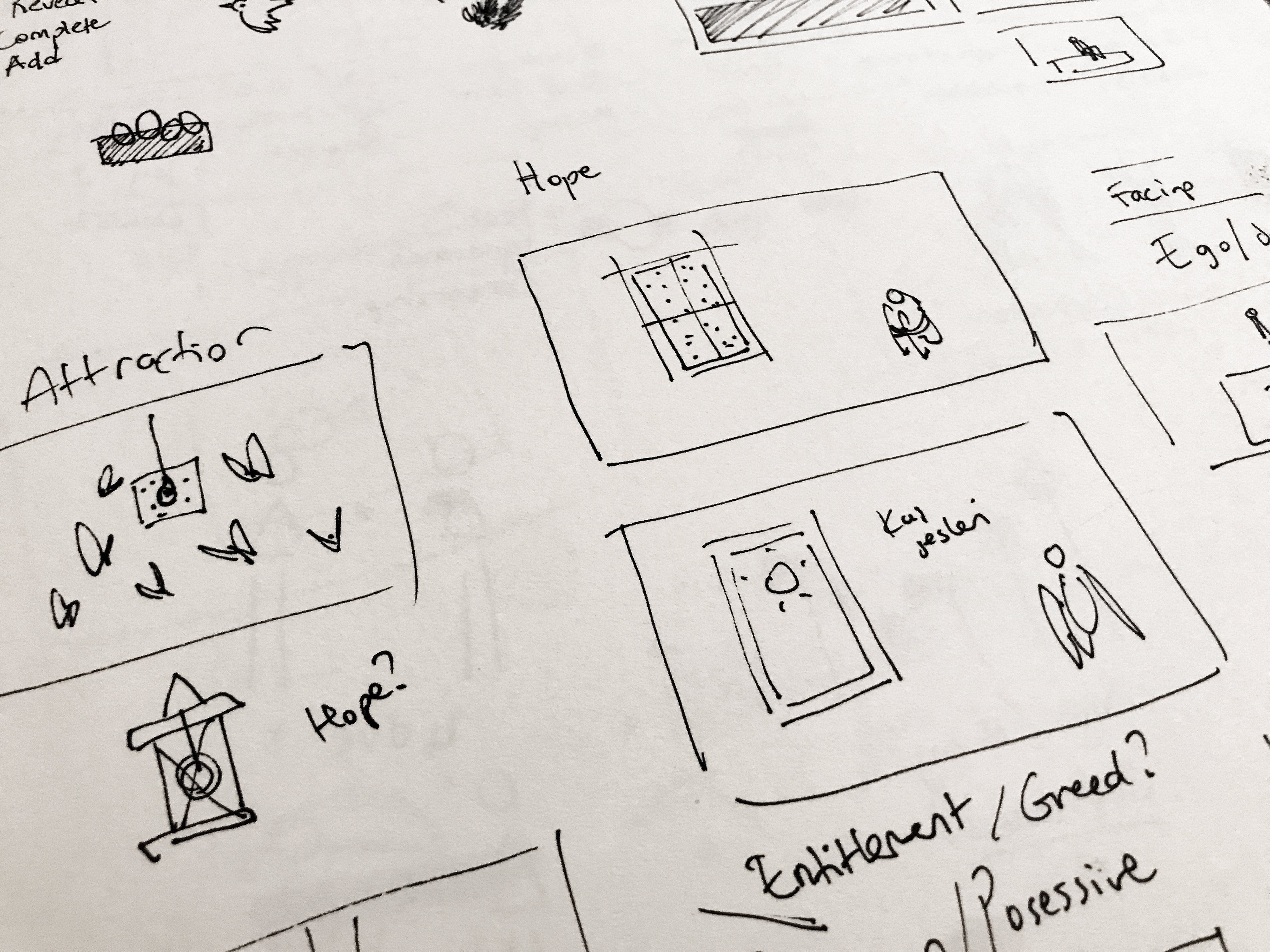Play NYC 2020 Official Selection
Comm Arts Interactive Competition 2022 Shortlist
Frames is a puzzle game that I've been developing over the summer. In Frames, players complete scenes by drawing frames in correct places. They do that but guessing the meaning in the scene based on the name of the level.
Goals & Inspiration
Each level in Frames explores a concept such as an emotional state or a political notion. The game expects players to complete the image by making meaning of the imagery and creating a meaningful whole by drawing frames.
Problem
The initial prototype was created as a weekly prototype class assignment. The brief was to create a game about Portraits. I wanted to explore it from a more conceptual aspect, so I decided to make a game that captures Portraits Of Emotions that incorporates simple and intuitive interactions.
Solution
Drawing frames to complete pictures in the scenes was my solution to this particular challenge. Aesthetically, I was very much inspired by works of Cristiana Couceiro and that is how I end up in cooperating the main mechanic of Frames.
Initial Prototyping
The initial prototype needed to be finished in a week. I spent about 10 hours to create a prototype with 4 scenes exploring different emotional states. I got very positive feedback on the prototype, so I decided to develop it further.
Development
As I decided to develop this game further, I wanted to create a modular system that allows me to create new puzzles really fast.
I created an architecture that allows me to build new puzzles just using Prefabs and tweaking in Inspector. I can control several aspects of the target frame in the inspector. These include frame size, position, the allowed distance from the ideal frame.
To explain briefly, the players need to draw the right size of frame on the right spot in the scene. This system I created allows me to keep track of the target frame by only placing two transforms in the scene. One is keeping track of the top left corner of the target frame, whereas the second one is for bottom right corner. I create an invisible rectangle based on how these transforms are placed in the scene and compare the size of the drawn frame with the invisible frame.
Game Loop Diagram
The structure of the gameplay loop is pretty straightforward. Hence, after building the system, I have created 10 more levels just in 10 days. Most of my time is spent over finding new ideas. I am a visual thinker, so I start by sketching. First, I try to find a visually compelling composition and combine it with a possibly matching idea.


Level Sketches
User Testing
I'm running user tests at the moment. One consistent feedback I got was the lack of feedback when people draw the frames on the screen. They were getting confused about whether they were drawing the frame too small or too big. In response to that, I implemented a feedback system where the frame loses its color gradually if it gets too big compared to the target size.
